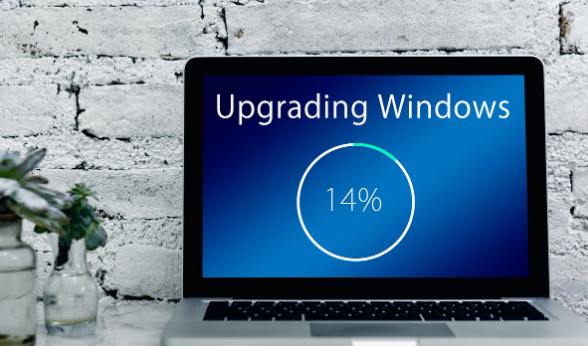A Comprehensive Guide
Upgrading or switching your computer’s operating system (OS) can seem like a daunting task, but with a clear plan and the right tools, it can be a smooth and rewarding experience. This guide will walk you through the essential steps to install a new operating system, whether you’re upgrading to a newer version of Windows, transitioning to macOS, or exploring a Linux distribution.
1. Preparation: Backup and Compatibility
Before you dive into the installation process, it’s crucial to prepare your system and data.
1.1 Backup Your Data
- Why Back Up? Installing a new OS often involves formatting your hard drive, which means all existing data will be erased. To avoid losing important files, back up your data to an external hard drive, cloud storage, or another safe location.
- What to Backup? Consider backing up documents, photos, videos, emails, and any other critical files. Additionally, make a list of installed applications and their license keys, as you may need to reinstall them later.
1.2 Check System Compatibility
- Hardware Requirements: Ensure your computer meets the minimum hardware requirements for the new OS. Check the OS vendor’s website for specifications.
- Compatibility Issues: Some older hardware might not be compatible with newer OS versions. Verify that drivers are available for your hardware components, especially for older peripherals.
2. Choose the Right OS
Selecting the right operating system depends on your needs and preferences.
2.1 Windows
- Versions: Windows offers various versions, such as Windows 10 and Windows 11. Each has different features and system requirements.
- License: Ensure you have a valid license for the OS you plan to install. You can purchase one from Microsoft or an authorized retailer.
2.2 macOS
- Compatibility: macOS updates are usually tied to specific hardware. Make sure your Mac model supports the version you want to install.
- Apple ID: You’ll need an Apple ID to download macOS from the Mac App Store.
2.3 Linux
- Distributions: Linux offers many distributions (distros), such as Ubuntu, Fedora, and Debian. Choose one based on your familiarity with Linux and your requirements.
- Community Support: Linux distros often have vibrant communities that can provide support if needed.
3. Create Installation Media
Once you have your OS, you need to create installation media.
3.1 For Windows
- Download Tool: Use the Windows Media Creation Tool, available on the Microsoft website. This tool allows you to create a bootable USB drive or download an ISO file.
- Create Bootable Media: Follow the tool’s instructions to either burn the ISO to a DVD or write it to a USB drive using software like Rufus.
3.2 For macOS
- Download macOS: Download the macOS installer from the Mac App Store.
- Create Bootable USB: Use the Terminal to create a bootable USB drive. The command typically involves the
createinstallmediatool provided by Apple.
3.3 For Linux
- Download ISO: Download the ISO file for your chosen Linux distro from its official website.
- Create Bootable USB: Use tools like Etcher or Rufus to write the ISO file to a USB drive.
4. Install the Operating System
Now that you have your installation media ready, it’s time to install the OS.
4.1 Boot from Installation Media
- Access Boot Menu: Restart your computer and enter the boot menu (usually by pressing a key like F12, Esc, or Del during startup). Select your installation media from the list.
- Change Boot Order: If necessary, change the boot order in the BIOS/UEFI settings to prioritize the installation media.
4.2 Begin Installation
- Windows: Follow the on-screen instructions to select your language, time, and keyboard preferences. Choose “Install Now” and enter your product key if prompted. When asked about installation type, select “Custom” to perform a clean install. Format your hard drive if needed, then select the partition where you want to install Windows.
- macOS: Follow the prompts to choose your language and connect to a Wi-Fi network. Use Disk Utility to format your drive if necessary, then select the drive where you want to install macOS and proceed with the installation.
- Linux: Select “Try” or “Install” depending on whether you want to test the OS before installation. Follow the instructions to set up partitions and install the OS. Most Linux installers offer an easy-to-follow graphical interface.
4.3 Post-Installation Setup
- Windows: After installation, you’ll need to set up your user account, configure privacy settings, and install updates. Reinstall your applications and restore your data from backups.
- macOS: Set up your user account and preferences. You may need to reinstall applications and restore data from your backup. Ensure you run the latest macOS updates.
- Linux: Set up user accounts, configure settings, and install additional software as needed. Linux distros often come with software centers or package managers to help you with this.
5. Troubleshooting and Final Checks
5.1 Common Issues
- Driver Problems: If certain hardware components aren’t working, check the manufacturer’s website for updated drivers or search forums for solutions.
- Boot Problems: Ensure your BIOS/UEFI settings are correctly configured. Sometimes resetting to default settings can help.
5.2 System Updates
- Check for Updates: After installation, check for system updates to ensure you have the latest security patches and features.
- Backup Again: After everything is set up and running smoothly, consider making a new backup of your freshly installed system.
Conclusion
Installing a new operating system can enhance your computer’s performance and provide new features, but it requires careful preparation and execution. By backing up your data, ensuring hardware compatibility, creating proper installation media, and following the installation steps for your specific OS, you can achieve a successful setup. With a bit of patience and attention to detail, you’ll be up and running with your new operating system in no time.
